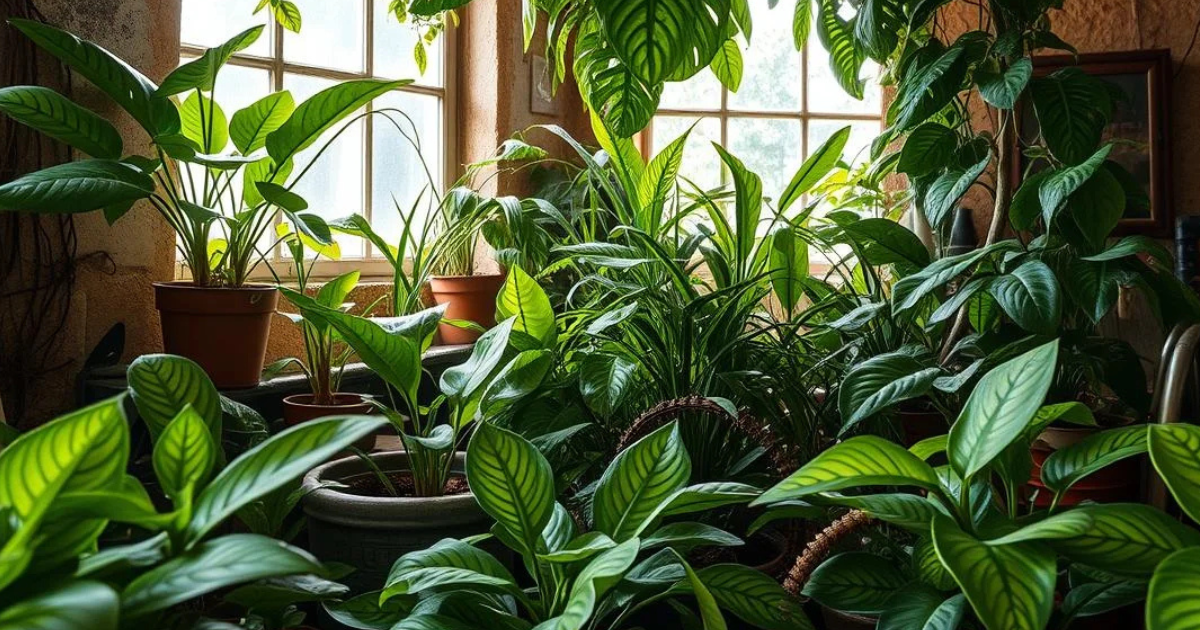Adding a Pamacristial plant to your home is an exciting step toward creating a lush, vibrant indoor garden. If you’re new to the world of plants or just beginning to grow your collection, you may wonder, “How can I keep my Pamacristial plant healthy and happy?” The good news is that caring for these beautiful, resilient plants is easier than you might think. With some attention and basic know-how, your Pamacristial plant can flourish and become a stunning focal point in your home.
In this beginner’s guide to Pamacristial plant care, we will walk you through everything you need to know—from light and watering requirements to troubleshooting common issues. By the end, you’ll feel confident in nurturing your Pamacristial plant and enjoying its unique beauty for years.
advertisement
Table of Contents
What is a Pamacristial Plant?
Before diving into care tips, it’s essential to understand precisely what a Pamacristial plant is. This plant is renowned for its eye-catching foliage, which typically features broad, glossy leaves that bring a sense of elegance to any room. Known for their adaptability, Pamacristials are often sought after by beginners and seasoned plant enthusiasts for their easygoing nature and low-maintenance care needs.
Native to tropical and subtropical regions, Pamacristial plants thrive in environments that mimic the warmth and humidity of their natural habitat. As houseplants, they can thrive in various settings, provided you give them the attention they need.
Why Pamacristial Plants Are Great for Beginners
If you’re new to caring for plants, you might want something beautiful and easy to manage. Pamacristial plants are the perfect choice for beginners, and here’s why:
- Low Maintenance: These plants don’t demand constant attention, making them ideal for people just starting out in indoor gardening.
- Adaptable: Pamacristial plants can grow in various indoor environments, making them a versatile choice whether you have a sun-soaked window or a room with more moderate light.
- Hardy: Pamacristials are relatively resistant to pests and diseases, so you needn’t worry too much about common plant health issues.
- Beautiful and Elegant: With their bold, dark green leaves and attractive structure, these plants can elevate the aesthetics of any room in your home.
The simplicity of care, combined with their beauty and resilience, makes Pamacristials a perfect addition to your indoor garden, whether you’re a seasoned plant owner or just starting your journey.
Basic Requirements for Pamacristial Plant Care
Understanding the basic requirements of your Pamacristial plant is critical to ensuring it grows strong and healthy. By focusing on a few core elements—light, temperature, humidity, and water—you’ll be well on your way to providing the best care for your plant.
Light
Optimal Light Conditions:
Pamacristial plants thrive in bright, indirect light. While they can tolerate lower light levels, they will grow more vigorously and produce lush, healthy leaves in brighter conditions. However, be cautious of placing your plant in direct sunlight, as this can scorch the leaves, causing them to turn yellow or burn.
Signs of Too Much or Too Little Light:
- Too much light: If your plant gets too much direct sunlight, the leaves may develop sunburn marks (brown, crispy spots). This can happen especially in the hotter months when sunlight is more robust.
- Too little light: If your Pamacristial is not receiving enough light, the leaves may become leggy (long and thin), and the plant’s growth may slow.
Best Placement:
advertisement
Place your Pamacristial near a window with filtered light or a few feet away from a bright window. East- or west-facing windows work well for these plants, providing the right balance of indirect sunlight.
Temperature and Humidity
Ideal Temperature Range:
Pamacristial plants thrive in warm temperatures, ideally between 60°F to 75°F (15°C to 24°C). They do best when kept in a consistent, moderate climate, so avoid placing them near temperature extremes like drafty windows or air conditioners.
Humidity Needs:
Pamacristials are native to tropical regions, which means they thrive in higher humidity levels. If your home tends to be dry, especially in winter, consider using a humidifier or placing the plant on a humidity tray (a shallow dish filled with pebbles and water). Regular misting can also help, but be careful not to overdo it, as excess leaf moisture can lead to fungal problems.
Signs of Poor Temperature/Humidity:
- Low humidity: If your Pamacristial is not getting enough moisture in the air, the leaf tips may start to brown and become crispy.
- Temperature stress: If the plant is exposed to cold drafts or sudden temperature fluctuations, the leaves may droop or show signs of stress.
Watering Needs
Watering is one of the most crucial aspects of Pamacristial plant care; getting it right can make all the difference.
Watering Frequency:
Pamacristials prefer their soil to be kept consistently moist but not soggy. Water your plant when the top 1-2 inches of soil feels dry. The watering frequency will depend on the temperature, humidity, and the size of the plant’s pot. You’ll likely need to water every 7-10 days during the growing season (spring and summer) and reduce watering in the fall and winter.
Watering Method:
When watering, use room-temperature water. Be sure to water thoroughly, ensure the water reaches the root system, and allow any excess water to drain out of the pot. Never let the plant sit in water for an extended period, which can lead to root rot.
Signs of Overwatering:
- Yellowing leaves
- Soft or mushy stems
- A foul smell coming from the soil
Signs of Underwatering:
- Crispy, dry leaf tips
- Wilting or drooping leaves
Soil and Fertilization Tips
Best Soil for Pamacristial Plants
Suitable soil is essential for the health of your Pamacristial plant. You want a well-draining, loamy soil that allows water to flow freely without becoming waterlogged. Consider using a general-purpose potting mix and adding perlite or sand to increase drainage.
Pro Tip: To make your soil mix, combine one part potting soil, one part perlite, and one part coconut coir for a light, well-draining medium.
Fertilizing Schedule and Tips
Fertilizing helps ensure your Pamacristial plant has the nutrients it needs to thrive. During the growing season (spring and summer), feed your plant every 4-6 weeks with a balanced, water-soluble fertilizer. Look for a fertilizer with an NPK ratio of 10-10-10, which offers a good balance of nitrogen, phosphorus, and potassium.
Signs of Fertilizer Burn:
advertisement
- Brown leaf tips or edges.
- A white crust on the surface of the soil.
Be sure to follow the instructions on your fertilizer to avoid overfeeding, which can damage your plant.
How to Repot a Pamacristial Plant
Pamacristial plants grow steadily and may eventually need to be repotted to ensure they continue to thrive. Repotting is a relatively simple process, but timing and technique are crucial to minimizing stress on the plant.
When to Repot
You should report your Pamacristial plant every 1-2 years or whenever it outgrows its pot. Signs that it’s time to report include:
- Roots emerge from the drainage holes of the pot.
- The plant becomes top-heavy or crowded.
- The soil beginning to decompose or compact.
Step-by-Step Repotting Guide
- Choose the right pot: To allow the roots room to grow, select a pot that’s 1-2 inches larger in diameter than the current one.
- Prepare the new pot: Fill the bottom of the new pot with a layer of well-draining soil.
- Remove the plant from its pot: Gently slide it out of its old pot. If it’s stuck, lightly tap the sides to loosen the roots.
- Examine the origins: Check the roots for any signs of rot (dark or mushy roots). Trim any unhealthy roots using a clean, sharp pair of scissors or pruning shears.
- Plant and water: Place the Pamacristial in the new pot, fill it with fresh soil, and thoroughly water it.
Common Problems and Solutions
Even the most beginner-friendly plants can experience a few hiccups. Here’s how to troubleshoot some common Pamacristial plant issues:
Yellowing Leaves
- Cause: Overwatering, poor drainage, or nutrient deficiencies.
- Solution: Adjust your watering schedule and ensure the plant is in well-draining soil. If the plant shows signs of a nutrient imbalance, consider fertilizing.
Overwatering and Root Rot
- Cause: Watering too frequently or allowing the plant to sit in stagnant water.
- Solution: Let the soil dry out between waterings and ensure the pot has proper drainage. Repot into fresh soil if necessary.

